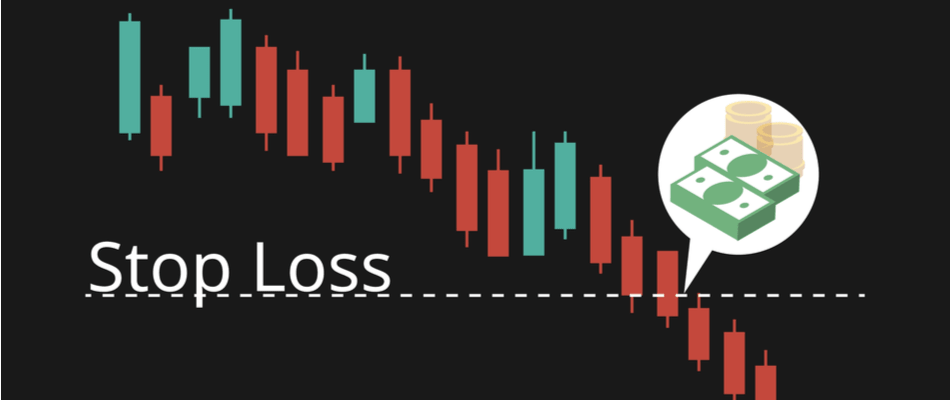What is spread betting?
Spread betting is something you hear a lot about these days, but what exactly is it? Spread betting, literally translated as spread gambling, is a derivative strategy in which you as a participant bet on the underlying value of, for example, a share or commodity. In this case, you are not the owner of this share or commodity. You simply speculate on a decrease or increase in the product, using the prices offered by brokers.
Just like in stock trading, spread betting has two prices listed. On the one hand, the price at which you can buy and on the other hand, the price at which you can sell. The difference between these two prices is called the spread . The broker profits from the gap between these prices, which makes it possible to make spread bets on them. This is without commissions, unlike most stock market trading.
As an investor, you go for the bid price when you believe the market is going to rise, and you go for the sell price when you think it is going to fall. The main features of spread betting are the use of leverage, the ability to go both long and short, the wide variety of markets available and the tax advantages.
Spread betting involves making a prediction about the future. This is very similar to CFDs. However, a CFD involves an agreement on the difference in price. Spread betting involves setting an agreement on points increase/decrease in the spread.
Key Points of Spread Betting
- Spread betting allows you as a trader to bet on a direction of the financial market without owning the underlying security.
- Spread betting is often promoted as a financial market activity that is free of commissions and taxes. However, in the US it is not allowed.
- Just like with shares, you can limit the risk in spread betting by using stop loss and take profit.
The origins of spread betting
Spread betting may sound more like gambling in a bar, like you do on sports matches. However, that is not what it is at all. Spread betting was invented by many in the 1940s by Charles K. McNeil, a math teacher from Chicago who later became an analyst and bookmaker. However, spread betting did not really become popular in the beginning. The professional version only emerged 30 years later, in London. A company was founded there where you could spread bet in gold. The market was very difficult for many to enter at that time, spread betting made this much easier. Although the origin lies in America, spread betting is illegal there.

The difference between a stock market deal and a spread bet
To illustrate the difference, we have taken a practical example. First, we look at a deal on the stock market, and then at a spread bet.
Let’s start with the stock market. Suppose you buy 1000 shares of Vodafone, for 193 euros. The price goes to 195 euros and so you have made 2000 euros profit. There are a few important points here. Without the use of margins, you would need 193 thousand euros for this purchase. In addition, there are commissions for entering and exiting the market. There are also taxes and other costs.
If we then look at a comparable spread bet, we see the following. If you were to also look at Vodafone, we assume for a moment that you can buy a bid-offer spread for 193 euros. Now you have to determine how much you allocate per point, the variable that represents the price difference. The value of a point can vary. We assume for a moment that a point represents a euro cent change in the price of the Vodafone share. We also assume that the purchase was made for 10 euros per point. When the share then rises from 193 to 195 euros, as in the example above. This spread bet was about 200 points, which means 200 times 10 euros, so a profit of 2000 euros.
The yield in both forms is therefore exactly the same in this case. However, with the spread bet you have no commissions and no taxes, at least not in some European countries. However, there are also disadvantages, for example you suffer from the bid-offer spread, which is much larger than in other markets. However, you also have the advantage that you need much less capital to enter the market. With a spread bet you need about 10% of the capital that is required on the stock market. Of course it works both ways, you can make relatively high profits relatively easily but also relatively easy big losses.
Risk management in spread betting
The risk in this form of trading is therefore quite high. There are some tools that make the risk easier to manage, such as the following:
- Standard stop-loss orders: here you can determine in advance at what amount you will automatically stop a bet. At that moment you will receive the best possible price for it. In this way you prevent too big losses. It is possible that you will receive less than the trigger you had made, especially when the market moves quickly.
- Guaranteed stop-loss orders: this form of stop-loss guarantees that you will receive the exact amount you set, regardless of market conditions. Of course, you pay extra for this form of security.
You can also use arbitrage, by betting on two different ways at the same time.

Spread betting arbitrage
Arbitrage opportunities arise when the prices of identical financial instruments vary across markets or between different companies. As a result, a financial instrument can be bought at a low price and sold at a high price. An arbitrage transaction exploits these market inefficiencies to achieve risk-free returns.
Due to the unprecedented access to all kinds of information and the increased communication, the possibilities for this kind of transaction in spread betting and other financial instruments are limited. However, it can still occur every now and then. For example, when two companies take different positions on the market, while determining their own spreads.
In this case, the arbitrage bettor bets on spreads of two different companies at the expense of the market maker. When the top of a spread offered by one company is below the bottom of the spread of the other company, the arbitrage bettor profits from the gap between the two. In simple terms, this means that you buy low on one company and sell high on the other. As a result, the amount of return is not determined by market rises or falls.
There are many forms of arbitrage, such as differences in currencies, interest rates, bonds and stocks. You can profit from these. Arbitrage is usually associated with risk-free profit, but this is of course not entirely the case. You do indeed have to deal with a number of risks, such as execution, counterparty and liquidity risk. Failure to complete transactions smoothly can lead to significant losses for the person entering into the arbitrage transaction. Counterparty and liquidity risk can also come from the markets, or from the failure of a company to execute a transaction.
The conclusion regarding spread betting
Now that we know how spread betting works, the most important question is: what should you think about it? Is it an opportunity that you should seize or is it not that interesting at all? Of course, this depends on many factors, but we can draw a number of conclusions about spread betting. With the rise of electronic markets, which are constantly developing, spread betting has successfully lowered the barriers to market entry. In addition, it has expanded the market, in fact it has created a diverse alternative market.
Arbitrage in particular allows investors to exploit the price difference between two markets. This is especially the case when two companies offer different spreads on identical assets. The biggest pitfalls of spread betting are the temptation and danger of overuse. However, the small capital required to get started, the tools available to manage risk and the benefits in terms of tax and commissions make it a very attractive opportunity for many. If you know what you are doing, research spread betting and approach it properly, it is definitely something you can try.
Start investing
If you want to start investing, you need a broker to be able to execute transactions. Think about how you want to trade and read up on it. Then look for a suitable broker. This can be done easily with our broker comparison tool.